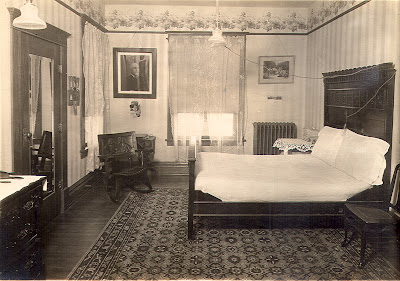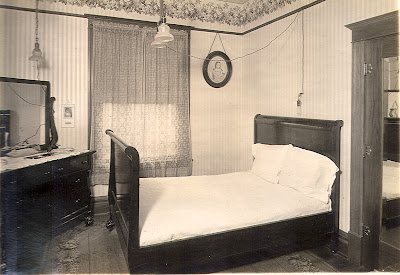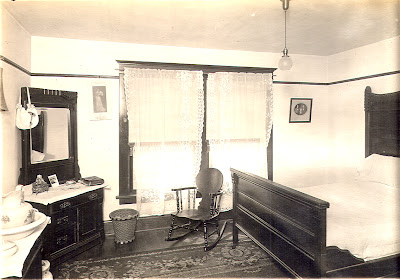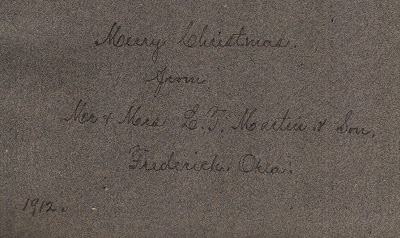Sent to The Frederick Leader and The Frederick Press, April 26, 2011
 |
| May Day ceremonies at Frederick's Lowell School, 1920s or early 1930s. |
[Click on photos to see larger]
May Day was celebrated at old North Ward school
A springtime tradition that was often celebrated in past decades was dancing around the May pole. It’s a rite of springtime and new beginnings that originated in ancient Rome and was celebrated for centuries in Europe. In the early part of the Twentieth Century, American school children often participated in springtime rites that involved dancing around the May pole.
 |
| May Day photo taken from atop Lowell School building. |
On May Day (May 1) children would perform an elaborate in and out, over and under dance with long ribbons or streamers, weaving them around a tall pole – the May pole.
Undated Tillman County Historical Society photos from the 1920s or early ‘30s show a May Day celebration at Frederick’s old North Ward (Lowell) school – a two-story brick building that was located in the north part of Frederick (the 800 block between 12th and 13th Streets).
The photos, obviously taken from a vantage point atop the school building, show girls in fancy white dresses, ready to begin the dance with May pole ribbons.
 |
| A large crowd gathered for the Lowell School May Day event. |
A May Day Queen contest was apparently part of the festivities because a throne was in place on the schoolyard and girls at left of the May pole are waiting to participate in the contest.
Boys in white shirts sit in a row to the far left.
What did the North Ward May Day ceremonies entail?
It’s obvious that the school May Day celebration was a real event, that many parents and community members came to observe and participate, and it’s easy to imagine the young people, then as now, full of anticipation for spring weather and a concluding school year.
Boys in white shirts sit in a row to the far left.
What did the North Ward May Day ceremonies entail?
It’s obvious that the school May Day celebration was a real event, that many parents and community members came to observe and participate, and it’s easy to imagine the young people, then as now, full of anticipation for spring weather and a concluding school year.
 |
| Frederick's Lowell (North Ward) schoolyard hosted a playground football game, probably in the 1940s. |
Joe Wynn is a member of the Tillman County Historical Society’s board of directors. He can be contacted by e-mail at tillmanokhistory@gmail.com.




















